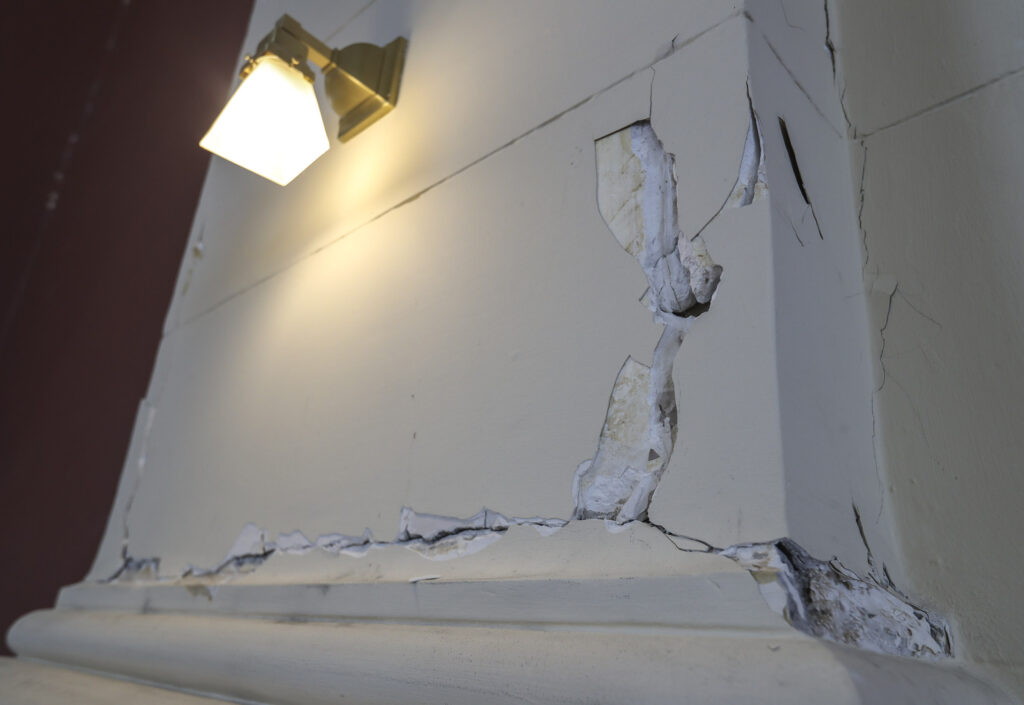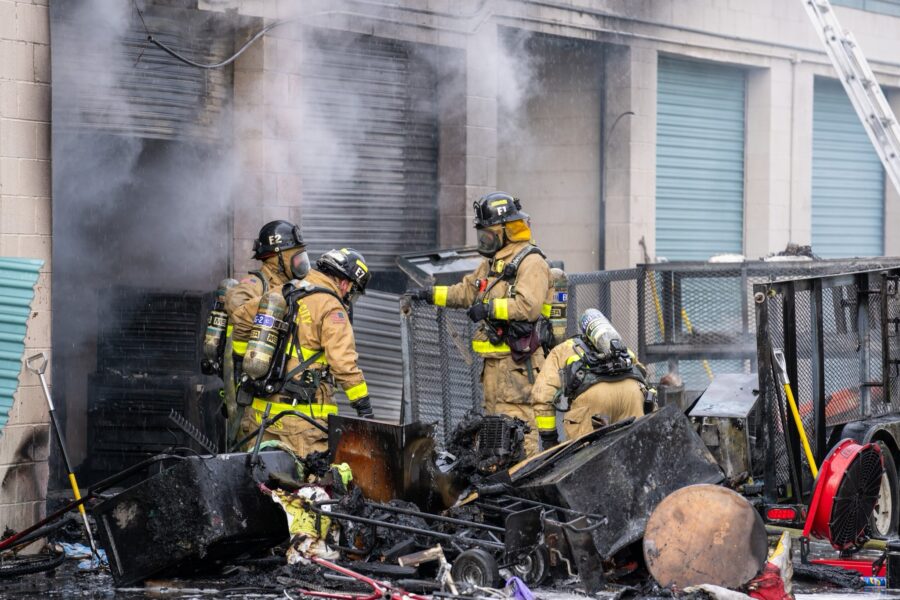How the Magna earthquake may have ‘saved’ Salt Lake City’s historic Rio Grande Depot
Apr 23, 2023, 10:11 AM

The Rio Grande Depot in Salt Lake City is pictured on Thursday, April 9, 2020. The historic building was damaged during a 5.7 magnitude earthquake centered in Magna on March 18. (Photo: Steve Griffin, Deseret News)
(Photo: Steve Griffin, Deseret News)
SALT LAKE CITY — Jerod Johnson arrived at the Rio Grande Depot not long after a massive 5.7-magnitude earthquake rattled the building on March 18, 2020, finding cracks in the walls and floors covered in plaster.
The earthquake, and its subsequent aftershocks, damaged the century-old building so severely that it has remained closed for more than three years and counting, while crews repair it and retrofit it for any future seismic activity. But the quake also showcased the building’s structural and other deficiencies, giving experts like Johnson, a principal for the structural engineering firm Reaveley Engineers, a better understanding of how to fix the building and help it last another century.
“I think we’re going to look back on this at some point in the future … and (view the earthquake damage) as a blessing in disguise,” he said, in a new video published by the Utah State Historic Preservation Office. “I think we might look back on it and we might ultimately say the Magna earthquake saved that building.”
It could be some time before the building reopens, though. Those behind the renovation project said it’s a delicate process and it could take “several years” to complete, during a virtual roundtable about the future of the building organized by the state agency Thursday.
“It is a big project touching lots of areas of the building,” said Sara Staffanson, an architect for the firm CRSA, as her colleagues confirmed there’s no real timeline for all the work to be completed because they want the work to be done “correctly.”
A complicated renovation
The Rio Grande Depot, which was the home of the Utah Division of State History and its vast historic collection at the time of the earthquake, first opened in 1910. It was designed by revered Chicago architect Henry Schlacks, using a mix of Renaissance Revival and Beaux Arts architectural styles.

Damage to the Rio Grande Depot in Salt Lake City that was caused by a 5.7 magnitude earthquake on March 18 is pictured on Thursday, April 9, 2020. (Photo: Steve Griffin, Deseret News)
It remained a stop along the Denver and Rio Grande Western Railroad line at the time before trains fell out of favor and the station was no longer needed. Utah eventually acquired the property in 1977 and it has remained in state hands ever since.
Some renovations have been made over time; in fact, the state replaced its historic neon sign with a more modern LED replica about six months before the earthquake. Work to fix the massive damage began right away.
However, Johnson, Staffanson, and everyone assigned to the project ran into a major roadblock: They wanted to keep all the historic features of the building but there aren’t many documents still around about how the depot was constructed.
John Ewanowksi, an architect and member of Salt Lake City’s Historic Landmark Commission, said they did find four blueprints between 1908 and 1909, which helped them figure out the spacial aspects of the building. There were also some helpful papers from when the state purchased the property.
That helped a little, but the team did an “investigative” demolition in some parts of the building, looking for what was hiding behind the plaster that structural drawings would have told them, Ewanowksi explained. They also hired a consultant who helped them through a painstaking process of using historic photos and other materials to figure out how crews assembled Schlacks’ design more than 110 years ago.
“This was pretty difficult,” he said. “Usually, there’s something to go off of, as far as original drawings, especially for a building with this kind of public nature.”

Jim Russell, director of the state’s Division of Facilities Construction and Management, left, and Jon Vance, project manager for the division, look at damage to the Rio Grande Depot in Salt Lake City on Thursday, April 9, 2020. The damage was caused by a 5.7 magnitude earthquake centered in Magna on March 18. (Photo: Steve Griffin, Deseret News)
Members of the team believe they have everything figured out now but it’s still going to take time to make the repairs so it can last another 100 years. The state’s history collection has since been relocated to several other spots across the Salt Lake Valley before it ends up in a new state museum at the Utah Capitol in the coming years.
The experience is why Johnson said it’s important for people to hang onto important documents. He said the few documents the team did find played a huge role in moving the project forward.
“They were worth their weight in gold,” he said.
The importance of reinforcement
The March 2020 earthquake also damaged dozens of other iconic old buildings in the valley and led to the demolition of a historic mansion in Salt Lake City.
There are somewhere between 140,000 and 180,000 buildings with unreinforced masonry in the region, many of which are buildings constructed before the 1980s, Johnson explained. There are some programs available to help residents pay for retrofitting, such as Salt Lake City’s “Fix the Bricks,” but it is an issue that looms over the state.

Damage to the Rio Grande Depot in Salt Lake City that was caused by a 5.7 magnitude earthquake on March 18 is pictured on Thursday, April 9, 2020. (Photo: Steve Griffin, Deseret News)
That’s why he points to the Rio Grande Depot as an important tale, one that highlights this issue.
“(The depot) is kind of a hallmark of the vulnerabilities we have,” he said. “This one should be held up as a good example of what can happen and what should be done.”













